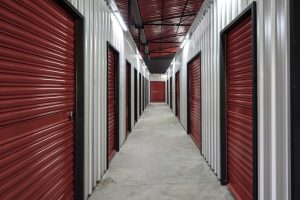
Water damage, an unwelcome byproduct of leaks, torrential rains and floods, plumbing mishaps, and numerous other unfortunate incidents, can wreak havoc on your home or property. It’s thus critical to understand the pivotal role of time in dealing with water damage and the importance of addressing it immediately to prevent extensive destruction and costly repairs.
The Quantum of Water Damage
Minor Water Damage
Generally, minor water damage is localized, impacting only a small area. The affected section might have been exposed to water briefly or received minimal water exposure. Despite appearing trivial, even minor water damage should be addressed promptly to prevent further repercussions.
Major Water Damage
Major water damage, on the other hand, signifies a more significant issue, usually affecting a larger area or a result of prolonged water exposure. Flooding or pipe bursting are common causes of major water damage. It’s pivotal to act quickly in such cases to mitigate the damage.
Identifying the Level of Water Damage
Determining the severity of water damage can guide you in your action plan. Some apparent signs of major water damage include warping or buckling of floors, visible mold growth, strong, musty smells, and intense staining.
The Influence of Time on Water Damage
Time is of the essence when it comes to dealing with water damage. How quickly you act can drastically impact the degree of damage, repair costs, and the restoration process. Here’s how timeframe influences water damage:
- The Initial Hours After Water Exposure: Rapidly absorbed by dry materials, water quickly settles into nooks and crannies, prioritizing extraction.
- After 24 Hours: Unattended moisture can lead to the growth of mold and mildew, escalating health risks.
- One Week After Water Exposure: Prolonged exposure to water can lead to structural instability, rendering the property unsafe.
- Long-Term Effects: Untreated water damage can lead to lasting structural issues and serious health concerns due to mold.
Need for Quick Water Damage Restoration
As evident, early and rapid action post-water damage can curtail further damage and ensure quicker restoration. Thus, for residential or commercial property damage restoration services, fast and reliable help is necessary. Herein emerges the need for Canadian property restoration services committed to helping you bounce back post-disaster.
Initiating First-level Response Post Water Damage
While professional help is the most viable solution for extensive water damage, simple, immediate steps in water incidents can also reduce the damage extent.
- Identify the water source and curtail it to prevent further damage.
- Gauge the damage and document it for insurance purposes.
- Contact professional restoration services like PuroClean water damage restoration.
- Initiate first-level safety measures such as unplugging electricals and moving valuables to safer zones.
When to Seek Professional Water Damage Restoration?
Despite your best efforts, severe water damage needs professional intervention. If there are structural issues, visible growth of mold, or the damage covers a large area, it’s time to call professional restoration services.
Selecting the Right Water Damage Restoration Services
Factors to Consider
Choosing the right help can hugely affect the restoration process. Before you decide, be sure to check for the following:
- Experience and Expertise
- Speed and Efficiency of Service
- Costs and Reviews
- Valid License, Insurance, and Certification
Preparation before the Arrival of Professionals
Ensure safety and cleanliness as far as possible before professionals arrive. Remove obstruction and clean the areas that aren’t affected.
Why Do Water Pipes Burst?
Water pipes are one of the most crucial components of a home’s plumbing system, but they’re also among the most vulnerable to various problems, chief among them being bursting. Understanding why water pipes burst can help you take preventive measures and avoid a water damage catastrophe.
- Freezing Temperature: One of the most common reasons water pipes burst is freezing temperatures. When water inside a pipe freezes, it expands, and further freezing and the resulting pressure can cause the pipe to rupture.
- Clogged Pipes: Pipe blockages, whether caused by sediment buildup or foreign objects, can also lead to bursting. As the blockage prevents water from flowing freely, it applies pressure on the pipe walls, eventually compelling them to burst.
- Corrosion and Aging: Corroded and aged pipes are prime candidates for bursting. As pipes age, they become weak, making them susceptible to breakage. Corrosion can thin the piping walls, making them vulnerable to the pressures of the water it carries.
- Natural Force: Natural forces such as earthquakes, root intrusions, or shifting soil can exert pressure on pipes, causing them to buckle or burst.
- High Water Pressure: High water pressure can cause water pipe bursts. If the water pressure in your home’s plumbing system is too high, it can put excess pressure on your pipes, causing them to burst.
Conclusion
To recap, timing is paramount when facing water damage. Professional help is invaluable in cases of severe damage or uncertain causes. A classic example of the latter is when you’re left wondering why water pipes burst. As any misstep can lead to extensive damage, swift, professional help like PuroClean water damage restoration is advisable. Remember, an early response to water damage safeguards your property and peace of mind.








